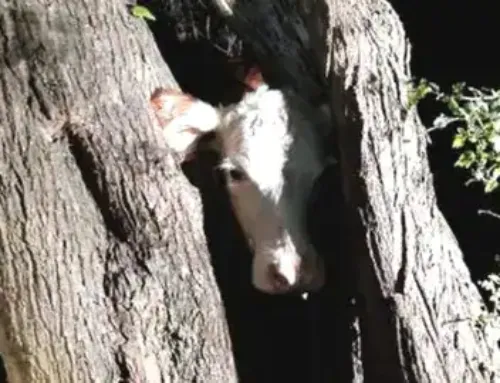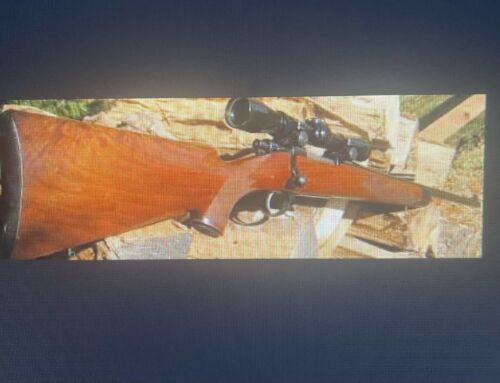November 8
Regardless of weather or phase of the moon, most does in the northern two-thirds of America will be bred between November 5 and Thanksgiving—this year, next fall and so on. Historically, November 8 has been and will continue to be one of the top big-buck days within this window. Get this: A whopping 15 Boone and Crockett bucks were killed on November 8, 2003, by far the most of any day that fall. Why so good? Well, in two or three days most of a herd’s does will pop into heat. For these two or three days prior, the horny big boys lug around in a daze and wait for that to happen. A giant might walk right past your stand, oblivious to your presence.
Optimum conditions: The cooler the better, with a light to moderate wind out of the north or west. But since the bucks are out of their gourds and the lure of the near-estrus does is so powerful, this is the one day when you’ll probably see a big deer even if it’s in the 60s or 70s. With the moon full this year and deer rutting like mad in the night glow, climb into a stand before first light and hunt it till 2:00 p.m. (if you do that, you might as well hang tight all day). Some deer that bed down after a long night on the woods will move again sometime at midday.
Try this stand: This Saturday, there is no better spot for your stand than on an elevated ridge near a field of beans, corn, etc. A ridge of timber is staging area near the doe feed and a hub of buck traffic. Both local and vagabond bucks cruise the ridge, rubbing, scraping and sniffing out does. Much of this activity will occur at night, but some big deer start to move earlier in the evenings, and linger after sunup around Nov. 8. Set your stand on a corner or edge of the ridge where the access and predominant wind are best. There’s a good chance you’ll see at least one good buck and maybe more
November 12
Why I like it: Even though the rut is beginning to progress to “lockdown” in some places—the phase when older bucks hook up with older does and seem to go underground to breed for 3 or 4 days—this is a great day to hunt. From one of your best stands, you might catch a 10-pointer that just finished with one doe and has gone looking for another…or a subdominant 3-year-old 8-pointer running around and trying to steal another buck’s cooped-up doe.
Optimum conditions: Cooler the better. In the North, you can start thinking about snow, which will make things better yet for seeing deer and piecing together their tracks and trails. With the last-quarter moon waning to new, the darker nights should make for good to great early-morning deer movement.
Try this stand: Having been hassled by bucks for a week, many does sneak out into CRP fields, thick cedar ditches and other out-of-the-way spots where the bucks cannot so easily chase them around anymore. Also, a mature buck knows when a doe is on the verge of standing for him. He’ll herd her out in the same type of cover, pin her down and stand guard for 24 hours or so, until he finally gets his way with her.
With that in mind, set a stand to overlook a CRP field or similar weedy habitat where you can glass 100 yards or farther into the brush for breeding deer or loner bucks prowling for a doe. Set up to watch a deer trail that comes out of the woods to the weeds, or on a fence line, gap gate or similar funnel.
November 22
Why I like it: By now many of the does have been bred, and lockdown ends. But mature bucks that have survived battles with other males, not to mention the gauntlet of hunters’ arrows and bullets, go back on the prowl for a few days for the last 10 percent or so of gals that are still receptive. This is a great time to whack a monster, like the 22-point, 221 4/8-inch Iowa giant that Brian LaRue got with his bow one November 22 (picture below).
The buck crossed a field, hit the woods, and cut through several thickets, rubbing as he cruised for the sight or smell of a last hot doe. Brian put an arrow in the deer’s boiler room as it swung 20 yards behind his stand. The world-class buck was 4½ and weighed less than 200 pounds. Sometimes due to genetics big-racked bucks don’t weigh all that much. Plus, that buck had shed pounds chasing and breeding does for weeks.
Optimum conditions: Pray for daytime highs in the 20s to 40s, with lows in the 20s or teens. Cold and snow will make the thin, tired bucks move hard and early in the day near crop fields or green plots. They still want to hook up with does, but they gotta eat. The dark moon should make for perfect hunting conditions. Skittish bucks feel comfortable moving under cover of darkness and at dusk and dawn.
Try this stand: You’ll probably have a cold west to north wind, so hang a stand on the east side of a hillside where you can cover a wide swath of woods or pasture. If there’s good late-season food like soybeans or corn farther to the east or north, great, a lot of deer will move toward and past you going in that direction. Watch for a bruiser cutting from one thicket to the next, hoping to run across a last hot doe holed up in one of them. If he gets lucky you might too. If he finds a gal and runs her close to your stand, shoot straight and tag out on the last best day of the season.








MIKE…THAT IS EXACTLY WHAT HAPPENED SATURDAY AND SUNDAY. WE HAD DOE ALL OVER 2 STANDS THAT MY SON AND I WERE HUNTING, WAITING ON BIG BOY AND FREAK NASTY THAT WE HAD SEEN ON TRAIL CAMS. WE USED RATTLES,CANS AND GRUNTS AND COULDNT GET ANY OF THE BUCKS TO COME CLOSE ENOUGH FOR BOW RANGE.
WE HAD BOTH BUCKS WITH IN 75YDS AND EYE SIGHT, HOPING FOR ANOTHER OPPORTUNITY IN THE COMING WEEKS
THANKS FOR THE GREAT BLOGS YOU WRITE
JOHN
I love reading your mink-strategies, Mike. In fact, I’ve always loved your style of writing…mainly because it resonates with my experiences/encounters over the years. I nearly pulled it off on Nov. 7. Mr. Wonderful came in and I had him “dead to rights”, but a couple small trees (and the fact that he was on the wrong side of the fence) changed everything. The buck was in a small dip and couldn’t see my decoy, so the snort-wheeze and light rattling didn’t mean anything to him. Later in the a.m. I saw him (and a nice 3.5 year-old) with a doe that was getting very close to breeding time. The last two evenings have shown very little activity, but the mornings have been good. Bucks are locked up with ladies right now here, so it can be tough, if you don’t have access to the “party” areas. I hunted hard this weekend and have the red face, and dry brittle-skinned hands to prove it. Almost got to shoot me an immature ‘yote on Sat. a.m. too. Overall it was a good weekend. I wore myself out a bit, so it’s always good to read your strategies to get my mind right again. This is what I’ve come to know as “Vintage Hanback” material. Jolly Good Show ‘Ol Mate!